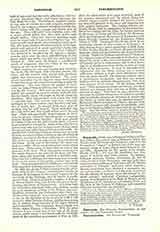

Panopolis, a titular see, suffragan of Antinoe in Thebais Prima; the ancient Apu or Khimmin which the Greeks made Khemmis and Panopolis, capital of the Panopolitan “nomos” or district; one of the most important towns of Upper Egypt made famous by the god Mïn. Herodotus (II, 91) speaks of its temple. Strabo (XVII, i, 41) says the population was composed of weavers and stone-cutters. As bishops, LeQuien mentions (Oriens christianus, II, 601-4) Arius, friend of Saint Pachomius, who had built three convents there; Sabinus, at Ephesus in 431; St. Menas, venerated February 11; and some other Jacobites. Recent excavations have disclosed a necropolis, numerous tapestries, similar to Gobelin work, important for the history of tapestry from the second to the ninth century; numerous Christian manuscripts, among them fragments of the Book of Henoch, of the Gospel, and of the Apocalypse according to Peter, and the Acts of the Council of Ephesus; and numerous Christian inscriptions (see Akhmin).
S. VAILHÉ

